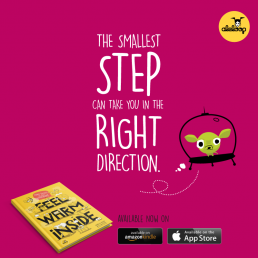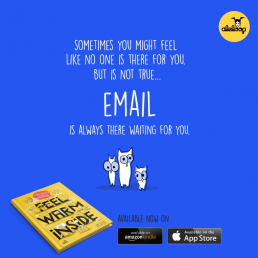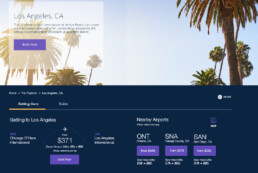Creating a team identity.
How do we inspire and support our teams to deliver their best performance, creativity, and unique point of view into the game? 5 simple approaches to leverage your global team into a collaborative, focused, and engaging global workforce.
Global teams located in different geographies are often viewed more as a challenge than an advantage. The key factor is to draw from its diversity and abilities to bring different cultural experiences to improve, built, and expand not only projects but also the unique company culture. The growth and evolution of a project balance individual contributions and collective engagement and streamlined vision.The challenge is not in the level of social distance, but in the degree of emotional connection among team members. Fostering positive relational dynamics, interactive communications, and team building strategies to mentor individuals and teams, to overcome and negotiate tensions across timezones, countries, and cultures.
Misunderstandings within the global teams can either produce costly consequences or remarkable innovations, creating millions of dollars in value for their customers and shareholders.
Creating a team identity beyond language.
Audiences and markets have become globalized and teams have grown to an amazing ecosystem of culturally diverse talents, inspiring brands across the globe with unlimited growth opportunity and fresh perspectives. We have offshore teams with copywriters and designers in London, development & QC in Buenos Aires, software engineers in Chennai and marketing teams in NYC. Maybe your campus in Prague has members from different nationalities.
Inspiring and managing teams is a wonderful challenge, and with team members from different countries and different cultural backgrounds and languages, it requires also a fresh and diverse perspective as their teams itself. Wherever your team is in one office or globally dispersed, they are expected to deliver their best performance, creativity, and unique point of view into the game. So, how do we leverage, support and inspire such a diverse workforce?
Language and cultural differences.
One of the key components of every collaborative relationship is trust, and open communication among team members is key. Language proficiency is a challenge and can undermine trust between its members. Colleagues with different levels of proficiency could be perceived as less communicative or reliable, undermining healthy trust-building in each other’s abilities and skills. It is crucial to find ways to transform these differences, into creative energy. It’s important to explore those differences so we know how to interact and grow as a group.
A way to encourage this understanding of diversity is to create unstructured moments, not necessarily ‘a meeting’- where everyone can share their cultural background and expectations about communication and working style. The team gets to learn more about each other by listening, sharing and asking questions and sharing about their backgrounds, even to learn what kind of food they like, or learn a traditional recipe from your home. It’s amazing when teams discover that we are not that different after all.
Teams experience a lot of pressure, and members of multi-language teams frequently relieve stress by switching into their native tongue, inadvertently excluding other teammates from their conversations. We need to reverse language barriers and communication anxiety by encouraging open dialogue in teams as a whole, creating a “team identity” equipped with amazing different strengths and unique backgrounds, united in one vision. Like a team of superheroes.
Reducing language gap
The success and strength of every multi-national team reside in one basic -but rather complex- aspect: communication. How can you measure the degree of language connection among team members? When people come from similar nationalities, the level of ‘language distance’ is usually low. Even if they come from different backgrounds, people can interact formally and informally, align, and build trust. They arrive at a common understanding of what certain behaviors mean, and they feel close and congenial, which fosters good teamwork.
Coworkers who are geographically separated, or come from different countries and cultures, could experience some kind of language anxiety that could prevent interactions. This originates from the inability to communicate, missing information and/or negative evaluation. This negative dynamics reduce team performance, and especially for creatives, artist, and designers, where creative energy, collaborative expression, and multi-team interaction is vital.
Creating a team identity
In a team, is important that everyone gets enough speaking time, and that everyone knows what they’re working toward. What’s our vision and why we are doing what we do. Bringing everyone around common goals and a unified vision is key. I can not stress this more! as evident it may seem, this is poorly done, and team members spot it quickly when is fake. Is has to be an honest take, not a speech. That’s why you need to know the brand, the clients, the team, the story. You need to be the first one to believe it to be able to inspire it. Highlighting the importance of each diverse skill in your team will level up the group dynamics, and also how much value the team is contributing to the success of the service, product or brand. Be open about the unique appreciation for everyone’s input and encourage meta-communication. Each particular story amounts to create a more solid, trustworthy and collaborative team.
Bringing everyone around a unified vision is key. Its has to be an honest take, not a speech. That’s why you need to know the brand, the clients, the team, the story. You need to be the first one to believe it to be able to inspire it.
Break down your common goal into actionable steps and outline each individual’s role and responsibilities. This reduces the chance of misunderstandings and lets everyone know that their contribution matters. Clarity of each team member’s contribution also makes it easier to address team performance as a whole. It sets expectations for what needs to be done, by who and when.
Building a team identity also entails finding common things between team members. Make space in your working day to promote team interactions, to get to appreciate each other team members. Perhaps there are teammates who share the same taste in movies, music or TV shows. Some may bond over hobbies or share information about their families, etc. Personal connections within the team make it easier to work together, trust and have a solid team identity.

To be continued…
New Book on Amazon
New Book on Amazon!! Feel Warm Inside: Funny sayings for leaders of all ages.
Feel Warm Inside: Funny Sayings for Serious Leadership is the perfect antidote to traditional books about leaders and leadership! This book is a funny, honest and imaginative view of life and leadership, that will help you on your very serious journey of becoming the leader you were meant to be. Doesn’t matter if you are an experienced leader or if it’s just you and your cat…this book is for you. After all, the true measure of a great leader is not their title, or the location of your office, but their ability to adapt. Good attitude, humor, and the right mindset can help you navigate into the weird, unpredictable and ever-changing world of adulthood…and the workplace.
Feel Warm Inside is a collection of funny, motivational sayings that celebrate the irony of adulthood while at the same time delivering a thought-provoking and often hilarious dose of self-awareness and inspiration for leaders of all ages. You don’t have to be perfect, you just have to be you. You are far better that your Instagram pic.
Time is passing by
CSS selectors all exist within the same global scope. Anyone who has worked with CSS long enough has had to come to terms with its aggressively global nature — a model clearly designed in the age of documents, now struggling to offer a sane working environment for today’s modern web applications. Every selector has the potential to have unintended side effects by targeting unwanted elements or clashing with other selectors. More surprisingly, our selectors may even lose out in the global specificity war, ultimately having little or no effect on the page at all.
Any time we make a change to a CSS file, we need to carefully consider the global environment in which our styles will sit. No other front end technology requires so much discipline just to keep the code at a minimum level of maintainability. But it doesn’t have to be this way. It’s time to leave the era of global style sheets behind.
It’s time for local CSS.
In other languages, it’s accepted that modifying the global environment is something to be done rarely, if ever.
In the JavaScript community, thanks to tools like Browserify, Webpack and JSPM, it’s now expected that our code will consist of small modules, each encapsulating their explicit dependencies, exporting a minimal API.
Yet, somehow, CSS still seems to be getting a free pass.
Many of us — myself included, until recently — have been working with CSS so long that we don’t see the lack of local scope as a problem that we can solve without significant help from browser vendors. Even then, we’d still need to wait for the majority of our users to be using a browser with proper Shadow DOM support.
We’ve worked around the issues of global scope with a series of naming conventions like OOCSS, SMACSS, BEM and SUIT, each providing a way for us to avoid naming collisions and emulate sane scoping rules.
We no longer need to add lengthy prefixes to all of our selectors to simulate scoping. More components could define their own foo and bar identifiers which — unlike the traditional global selector model—wouldn’t produce any naming collisions.
import styles from './MyComponent.css';
import React, { Component } from 'react';
export default class MyComponent extends Component {
render() {
return (
<div>
<div className={styles.foo}>Foo</div>
<div className={styles.bar}>Bar</div>
</div>
);
}
The benefits of global CSS — style re-use between components via utility classes, etc. — are still achievable with this model. The key difference is that, just like when we work in other technologies, we need to explicitly import the classes that we depend on. Our code can’t make many, if any, assumptions about the global environment.
Writing maintainable CSS is now encouraged, not by careful adherence to a naming convention, but by style encapsulation during development.
Once you’ve tried working with local CSS, there’s really no going back. Experiencing true local scope in our style sheets — in a way that works across all browsers— is not something to be easily ignored.
Introducing local scope has had a significant ripple effect on how we approach our CSS. Naming conventions, patterns of re-use, and the potential extraction of styles into separate packages are all directly affected by this shift, and we’re only at the beginning of this new era of local CSS.
process.env.NODE_ENV === 'development' ?
'[name]__[local]___[hash:base64:5]' :
'[hash:base64:5]'
)
Understanding the ramifications of this shift is something that we’re still working through. With your valuable input and experimentation, I’m hoping that this is a conversation we can have together as a larger community.
Note: Automatically optimising style re-use between components would be an amazing step forward, but it definitely requires help from people a lot smarter than me.
My tech travel setup
MacBook Pro
Robert Capa, a famous photojournalist once said, “If your pictures aren’t good enough, you’re not close enough.” It’s not just about zooming in with your lens, either. It’s about getting physically closer to people and getting to know them better. It’s also about spending a little time with a stranger before taking their photo. That helps build the trust and comfort that’ll come through in your pictures. Walk up to your subject with a simple wave and a smile to help communicate that you mean no harm.
Ask permission to take a photo if they speak the same language as you. If you don’t share a language, try learning some basic phrases ahead of time, gesture at your camera and ask through expression. Of course if someone doesn’t want their picture taken, it’s imperative to respect their wishes and move on — people are always more important than photographs. National Geographic writes that “making great pictures is primarily a mental process.” What makes you want to photograph the person or place? How might you describe it to a friend, and what adjectives would you use? Are there details you can focus on that tell a story?
iPad/iPhone
Maybe it’s a dry, arid desert, captured by focusing on the patterns of cracked earth. Or a prairie that’s photographed with the horizon at the bottom of the frame, to help create a sense of the open sky and tranquility. Or maybe it’s the story of a deft artisan, fingernails covered in wet clay as she molds a pot. When you’re on the road it can be tough to eat right and make sure you get all the right nutrients. I started taking daily supplements of Multi-Vitamin, Fish Oil capsules and Vitamin D and it helps a lot. Especially the Vitamin D since I don’t get to see the sun a lot during the winter in Sweden.
Sennheiser HD-25 Headphones
It’s difficult to recreate the grandeur of a vast landscape in the confines of a picture frame. But one way to add a sense of depth to your photos is to compose them with objects in the foreground that support the scene. It can be as simple as a winding road through a national park, or some rocks to show off the local geology.
If you’re taking photos of people during normal daylight hours, a quick way to get more flattering light is to move the person out of direct sunlight. The light is much “softer” and doesn’t cast stark, unflattering shadows across their facial features. Even better, have someone stand next to an open door or window as the single source of light.
Creating value through data
Creating a cost-efficient experience
Development, printing, and shipping more than a million Premiere Status Kits around the world were costly in resources and production. We needed to create not just a great experience that communicates that delivers the information, but also the value and experience that each tier deserves and also create opportunities for business.
A solution that brings value to the business and the users.

Understanding what’s more valuable for our customer
Change the color to match your brand or vision, add your logo, choose the perfect layout, modify menu settings, add animations, add shape dividers, increase engagement with call to action and more.
We started our journey-mapping initiative looking for existing, relevant data both qualitative (from past focus groups, customer-support logs, social media feedback) and quantitative (analytics, customer-satisfaction scores, etc.) to get a detailed understanding of our customer’s general attitudes and levels of satisfaction for specific interactions, and uncover missed opportunities and implementing new ideas.







